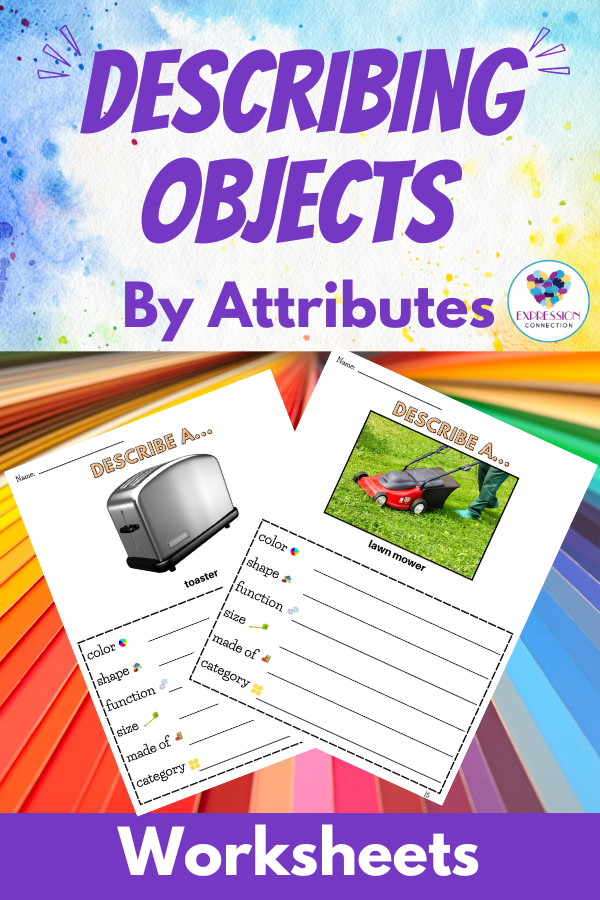Do you have students in your class who have difficulty learning and retaining new vocabulary, and you wonder how you can help? Teaching children to define vocabulary words by their attributes is one strategy that speech pathologists, teachers, and parents can use to help their students overcome this difficulty. This is because mapping objects by their attributes helps students understand the object better.
For example, if a child has never used a toaster, they may not understand what it is when they read or hear about one in a story. However, they may better understand what a toaster is if they can put it into a framework of what they already know about the world. This framework is the toaster’s attributes. Attributes include color, shape, size, category, parts, composition, location, and function.
It works something like this. First, show students a picture of the object they are describing. They will see that a toaster is made of silver metal, it’s the shape of a rectangle, it’s small enough to sit on a counter, it’s an appliance, you find it in the kitchen, it has a lever to push, and you toast bread with it. Looking at an unknown vocabulary word through the lens of what students already know about the world can help them learn and remember the meaning of new words more easily.
Tips For Teaching Children How To Define Objects By Their Attributes
- Start with basic concepts: Using objects or realistic pictures, have your student name the object’s most basic attributes, size, shape, and color. These are the attributes that students learn first. Once they can do that, challenge them by introducing other attributes. If your student can’t name other attributes, such as their composition or function, give them verbal cues or model the answer.
- Play games: A fun way to teach children attributes is by playing “I Spy.” Let your students take the lead and find something for you and other classmates to find around the room. Prompt the child by asking questions like, “What is it made of?” “What do you do with it?”
- Provide positive reinforcement: What seems easy to us may be very hard for your child. When we think children should know something, we can become afraid for them. This fear can lead to frustration. If this happens, remind yourself that everyone learns at a different pace, and when your child is unable to name an attribute, provide positive feedback and praise for their efforts, and correct their mistakes in a supportive and encouraging manner.
- Encourage labeling of objects: Talk to your child about everything you do as you label objects around the house. For example, “I’m getting a carton of milk from the refrigerator. I’m going to pour the milk into your cereal. What should we do with the milk carton now that we are finished?” Also, ask your child to name objects and tell you everything they know about it. This encourages vocabulary growth which is a foundation for strong communication skills.
- Be consistent: Make defining words by their attributes a habit you practice daily with your child. The more they hear and verbalize words and their meanings, the easier they will learn and remember them.
By consistently following these tips, speech pathologists, teachers, and parents can help children develop their ability to name attributes to encourage vocabulary learning and recall, which can strengthen their ability to communicate clearly.
These Boom™ Cards and TPT Worksheets and Google™Slides are perfect if you’re looking for realistic pictures of objects that include attribute prompts to help your student learn this important vocabulary learning strategy.

For more language therapy tips, click here.








